
Colletes compactus is a species of ground-nesting bee in the genus Colletes.

Colletes succinctus, the common colletes or heather colletes, is a species of Palearctic mining bee from the family Colletidae. It is part of the succinctus species group within the genus Colletes and is especially closely related to the ivy bee and the sea aster mining bee which are partially sympatric with C. succinctus but ecologically separate.
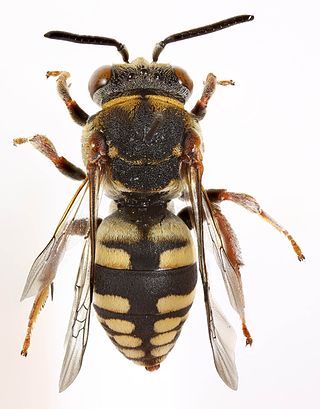
Epeolus cruciger, the red-thighed epeolus, is a species of cuckoo bee from the family Apidae. It is endemic to Europe, where its main host is the common colletes, although other species of Colletes mining bees have been recorded as hosts.

Epeolus is a genus of cuckoo bees in the family Apidae. They are often known as variegated cuckoo-bees. The species is uncommon to rare, and has strong patterns of black and white on the thorax and abdomen. These patterns are made of tiny fat hairs lying flush with the integument or "skin" of the bee. It is easily mistaken for Triepeolus, but is almost always smaller.

Triepeolus kathrynae is a species of cuckoo bee in the family Apidae. It is found in the United States and Mexico.
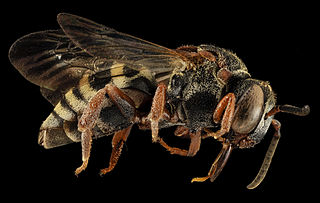
Epeolus scutellaris is a species of cuckoo bee in the family Apidae. It is found in the United States and Mexico.

Epeolus mesillae is a species of cuckoo bee in the family Apidae.

Triepeolus verbesinae is a species of cuckoo bee in the family Apidae. It is found in the United States and Mexico.
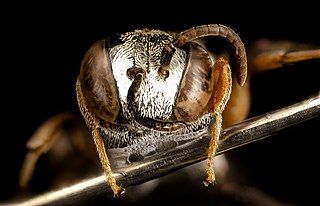
Epeolus howardi, or Howard's cellophane-cuckoo bee, is a species of cuckoo bee in the family Apidae. It is found in North America.
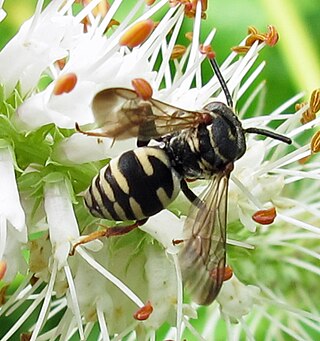
Epeolus canadensis is a species of cuckoo bee in the family Apidae. It is found in North America.
Triepeolus loomisorum is a species of cuckoo bee in the family Apidae. It is found in the United States and Mexico.
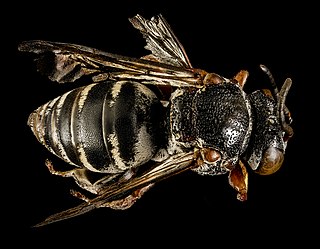
Epeolus lectoides, the cuckoo bee, is a species of cuckoo bee in the family Apidae. It is found in North America. Hosts include Colletes latitarsis and Colletes nudus.
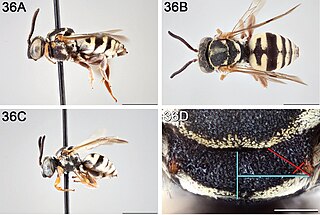
Epeolus compactus is a species of cuckoo bee in the family Apidae. It is found in the United States and Mexico. It is a parasite of Colletes kincaidii, with females laying eggs in the host species' nest.

Triepeolus remigatus is a species of cuckoo bee in the family Apidae. It is found in the United States and Mexico.

Epeolus carolinus is a species of cuckoo bee in the family Apidae. It is found in North America.
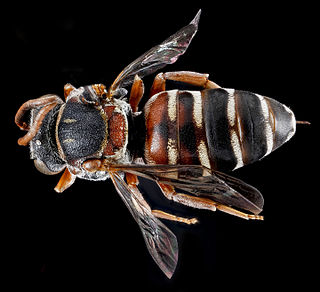
Epeolus zonatus is a species of cuckoo bee in the family Apidae. It is found in North America.

Epeolus glabratus is a species of cuckoo bee in the family Apidae. It is found in North America.
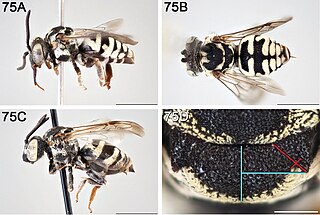
Epeolus olympiellus is a species of cuckoo bee in the family Apidae. It is found in North America.

Epeolus autumnalis, the cuckoo bee, is a species of cuckoo bee in the family Apidae. It is found in North America.

Epeolus bifasciatus is a species of cuckoo bee in the family Apidae. It is found in Central America and North America. It is a parasite of Colletes latitarsis.



















